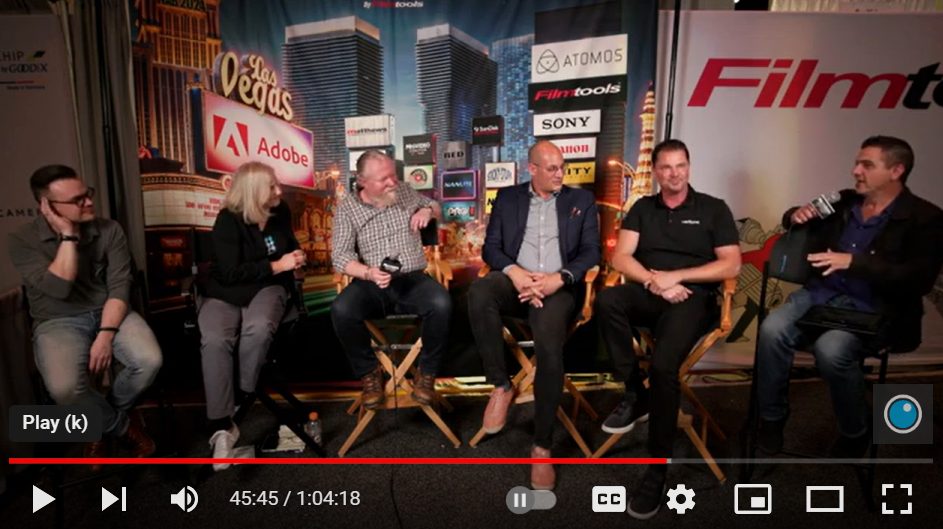
Users of Sony’s professional 3G HDV camcorders (including the HVR-S270, HVR-Z5, and HVR-Z7) and editors who receive footage from them may now consider purchasing a Canon HV40 camcorder to use as an inexpensive deck to feed footage to their NLE. The reason is that the Canon HV40 is quite inexpensive, is playback-compatible with the special native progressive modes available in the Sony 3G HDV camcorders, and even offers HDMI output. Although the Canon HV40 is not shaped like a desktop deck, it functions as such, and in many cases can save you over US$1200 over the lowest-cost compatible deck from Sony, which doesn’t even offer an HDMI output. Many of our readers read my recent articles which explained how first Sony USA and then Sony Latin America began to offer a liberation upgrade, which adds PAL, 25p and 50i to the cameras originally sold as 60Hz-only models. Well here are all of the modes, as they correspond with the Canon HV40 models.
Playback of the 50Hz and 60Hz Canon HV40 camcorders
The Canon HV40 60Hz model (aka the “NTSC” model) can perfectly play tapes shot by Sony’s 3G HDV camcorders in native 23.976p (aka “24p”) and 29.97p (aka “30p”) and deliver it natively via IEEE-1394. Although the same tapes can also be output by the Canon HV40 60Hz via HDMI, unfortunately it plays them with 2-3 or 2-2 pulldown over 59.94i… so if you are dealing with these types of footage, you are better off capturing natively via IEEE-1394. Also, the HV40 (60Hz) can also record in those same native progressive modes. Unlike Sony consumer HDV camcorders (which can play 60Hz material on a 50Hz model, and vice versa), The HV40 (60Hz) will reject any 25p or 50i footage if you try to play it back. However (at least at “press time”), no Sony consumer HDV camcorder can even playback any native progressive footage… so the Canon HV40 is still the logical choice for native progressive HDV playback.
The Canon HV40 50Hz model (aka the “PAL” model) can perfectly play tapes shot by Sony’s 3G HDV camcorders in 25p native mode, in addition to 25p recorded over 50i, and 50i recordings. All of these can be output over HDMI as 50i. At least via IEEE-1394, the 25p native mode comes out as native. Unlike the 60Hz version of the HV40, the 50Hz version strangely can’t record in any native mode. It can only record 25p over 50i, just like the Sony HVR-V1E and Sony HVR-V1P. However, at least it can play native 25p recordings from the Sony HVR-S270, HVR-Z5, and HVR-Z7. Unlike Sony consumer HDV camcorders (which allow playing 60Hz material on a 50Hz camera and vice versa), the 50Hz HV40 rejects any 60Hz-recorded tapes you may try to play in it. However, since to date no Sony consumer HDV devices can play any native HDV recordings, the Canon HV40 50Hz model still makes a lot of sense for this purpose.
Lineup of the lowest-cost options to play Sony HDV (3G) native recordings
- The least expensive Sony device to play HDV native recordings is the HVR-M15A deck. The list price is US$2840, and B&H Photo’s published selling price is US$2125. The HVR-M15A will play back all native and non-native 1080 HDV tapes, both 50Hz and 60Hz. However, it has no HDMI output at this price point.
- For those who only need to play back native 23.976p and 29.97p native recordings (plus all those recorded over 59.94i), the 60Hz version of the Canon HV40 costs US$799 at B&H Photo.
- For those who only need to play back native 25p (plus any 50i), the 50Hz Canon HV40 costs US$999 at B&H Photo.
- For those who really need to play back everything (23.976p native, 25p native, 29.97p native, plus all 50i and 59.94i), the sum of both HV40 cameras (one 50Hz and one 60Hz) will cost US$1798 from B&H… still much lower than the Sony HVR-M15A.
Don’t miss the related articles
- Sony upgrades 3G HDV camcorders to universal, for a small fee
- Sony Latin America also upgrades 3G HDV camcorders to universal, for a small fee
- Adam Wilt’s review on the Sony HVR-Z5 camera
- Adam Wilt’s review on the Sony HVR-Z7 & HVR-S270 cameras
- Revisiting HDV’s Virtues
- When 25p beats 24p
- Why capture HDV via HDMI?
- AppleTV, WDTV, or Blu-ray: Which one is best to distribute your HD project?
- Liberating segregated HDTV sets
Allan T©pper’s policy on model nomenclature
Since I know we have an international audience and we are living in the global village (thanks Marshal McLuhan!), I am constantly researching the possible variants among model numbers in the international marketplace. Often, video equipment manufacturers restrict certain functionality in regional versions, and sometimes they use a strict regional warranty system. Sometimes the manufacturers do this to avoid grey marketing (i.e. to encourage purchasing of products in a local region, to protect local distribution), and sometimes it’s to avoid extremely high import tariffs in a specific market. When they do this, the manufacturers often add a regional suffix to the model number.
When I mention model numbers, I purposely omit regional suffixes when they make absolutely no difference in a product’s features or functionality worldwide. I include these suffixes only when making specific reference to differences among regional variants. So if you see a model number I mention and you are used to seeing that same model number with an “E”, “J”, “N”, “U”, or “P” suffix, what I am writing is applicable to any version, with any suffix. Those few times I do include the suffix, it’s because I am specifically describing features which are specifically added or missing from that version of the product. I encourage all journalists in all media to do the same.
Check out listings for Allan T©pper’s seminars at AllanTepper.com. Also, listen to his TecnoTur podcast free in iTunes or at TecnoTur.us.

Filmtools
Filmmakers go-to destination for pre-production, production & post production equipment!
Shop Now












